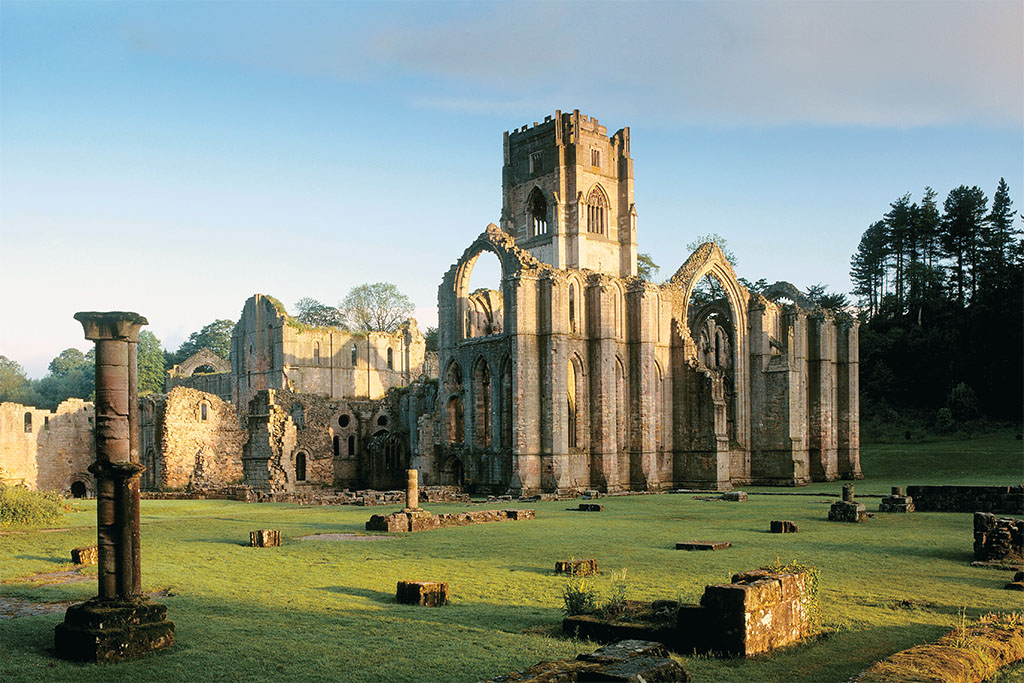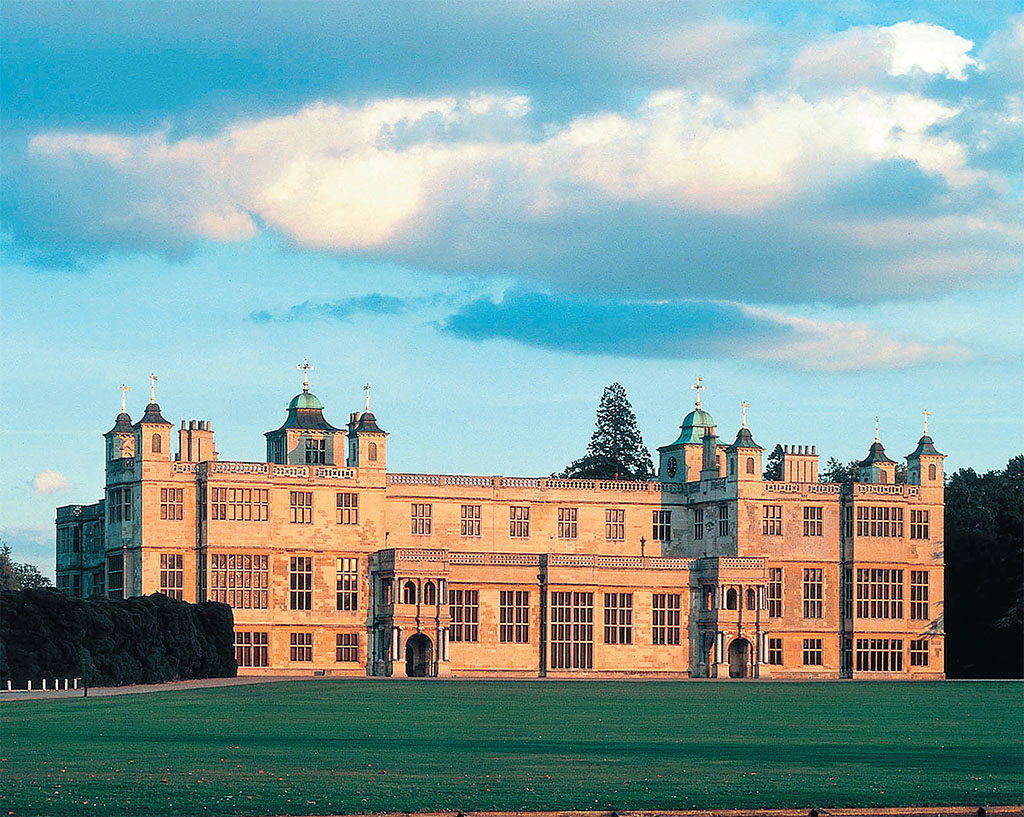
Thanks to English Heritage, residents of the 21st century can witness battles at medieval castles, meet World War I soldiers in a trench, greet King Henry VIII at a tournament and encounter Vikings as they land at Lindisfarne Priory
[caption id="EnglishHeritage_Feature" align="aligncenter" width="1024"]

‘ENGLISH HERITAGE SERVES AS A CARETAKER OF MORE THAN 400 HISTORIC PROPERTIES AND MONUMENTS’
[caption id="EnglishHeritage_img1" align="aligncenter" width="1024"]

©ENGLISH HERITAGE; PREVIOUS PAGE:BRITAINONLIVEW/NTPL/OLIVER BENN
Its logo, a red, crenellated square invoking a castle tower with a notched top, indicates that a property is under English Heritage’s protection. This government-subsidized organization serves as a guardian of England’s history and the caretaker of many significant historical sites. Much thought and many resources go into bringing the history of each site alive—English Heritage believes its properties “should inspire the imagination,” says Chief Executive Simon Thurley.
A vivid recent example is Audley End House in Saffron Walden, Essex, the historic home of Lord Braybrooke, who inherited the house in 1825. Today visitors can experience the sights, sounds and smells below stairs at one of England’s grandest houses, to gain insight into the everyday life of the butler, valet, housekeeper, lady’s maid, footmen and house maids who would have been employed there early in the 19th century.
English Heritage currently looks after more than 400 historic properties and monuments, including well-known sites such as Dover Castle, parts of Hadrian’s Wall and Rievaulx Abbey, and important buildings like Kenwood House, Ranger’s House and Marble Hill House in London. The beloved Albert Memorial was reopened in 1998 after a major conservation project by English Heritage. It took some four years to repair structural damage and restore the monument to its original state.
English Heritage also cares for many lesser-known properties of an unusual nature. For example, Hob Hursts House in Derbyshire is a square, prehistoric burial mound with an earthwork ditch that was named after a local goblin; the Roman Wall in St. Albans, Cambridgeshire, is a section of a two-mile-long wall built between AD 265 and 270; Derwentcole Steel Furnace near Durham was built in the 1720s and is the earliest, most complete steel-making furnace in existence in Britain. And Wrest Park Gardens in Bedfordshire in east England displays a history of gardening styles inspired by the gardens at Versailles.
Thurley recalls two notable properties that were taken on by English Heritage during his six years at the helm. One is the Ditherington Flax Mill located in a suburb near Shrewsbury. This was the first iron frame building in Britain and is considered to be the ancestor of the modern skyscraper because of its structure, not necessarily its height. The mill had been empty and in a serious state of neglect since 1987. English Heritage saved it from further deterioration, and has plans to return it to its original state.
Taking the lead preserving the past
The Ancient Monuments Act of 1882 gave the government legal responsibility for the historic environment. Over the next 100 years, it continued to be involved in protecting the nation’s heritage through various organizations. In the early 1980s, Michael Heseltine, then the secretary of state for the environment, proposed that most of the responsibility for the historic environments be passed to a semiautonomous agency that could operate with greater efficiency and vision, free from day-to-day ministerial supervision. Therefore, in 1984, the Historic Buildings and Monuments Commission, commonly known as English Heritage, was created.
Wales and Scotland have equivalent organizations to protect their histories. Wales has CADW, which means “heritage” in Welsh, while Historic Scotland protects and preserves the history of that country. See www.cadw.wales.gov.uk and www.historic-scotland.gov.uk for more information.
While the National Trust, another well-known organization that protects and preserves historical sites, is an independently registered charitable organization that only takes on properties with endowments, English Heritage is responsible for properties that would remain unprotected and would be lost to future generations if it did not save them. English Heritage takes on sites that no one else wants. It is a large and diverse organization with a staff of more than 2,000 and somewhere in the range of 630,000 members. English Heritage champions and cares for the historical environments by:
- Improving understanding of the past through research and study;
- Providing conservation grants, advisory and education services;
- Identifying and helping to protect buildings and archaeological sites of national importance;
- Maintaining historic properties and making them accessible to the broadest possible public audience; and
- Maintaining the National Monuments Record (NMR), a public archive located in Swindon, Wiltshire, that contains more than 10 million items such as photographs, plans, drawings, reports and publications covering England’s archaeology, architecture, social and local history.
[caption id="EnglishHeritage_img2" align="aligncenter" width="916"]

©ENGLISH HERITAGE
[caption id="EnglishHeritage_img3" align="aligncenter" width="1024"]

©DAVID PEARSON/ALAMY
Another property recently saved is Apethorpe Hall, a large Jacobean country house near Stamford in Northamptonshire. In 2004 English Heritage, with government support, was able to take on this property and make some of the necessary repairs. It now needs a buyer, however, who will live in the house and who would be willing and able to invest millions of additional pounds to complete the repairs and maintain Apethorpe Hall for decades to come.
English Heritage has also expanded the Blue Plaques Scheme, which celebrates people highly regarded in their professions who lived at a particular address at one time during their lives. Confined to London before 1998, a national program now covers all of England, with nearly 1,000 blue circle plaques around the country. Anyone can propose a plaque, but the person honored must have been dead at least 20 years, must be fairly recognizable to the public and must have made an important contribution to human welfare.
In recent years, English Heritage has removed thousands of items from storage and put them on display at sites to make the properties more historically accurate. Even properties not under the stewardship of English Heritage often benefit from its collection. One example would be the beautiful 18th-century pine bed with its re-produced bed linens and canopy that now dominates the bedroom of the Handel House Museum in London’s Mayfair. The bed is on a 25-year loan to this museum where George Handel, the great composer, lived from 1723 until his death in 1759.
[caption id="EnglishHeritage_img4" align="aligncenter" width="1024"]

©ENGLISH HERITAGE
To make its own properties more user-friendly, English Heritage has added gift shops and cafes at many sites. Colorful, detailed brochures greet the visitor at each property. From its beginning, English Heritage has placed emphasis on free educational visits to its properties.
English Heritage has developed creative ways of generating revenue for its work—such as a line of historic wallpaper patterns and paint colors on sale to the public. Based on historic papers originally manufactured in London from 1760 to 1890 to decorate elegant homes, the “London Wallpapers” collection was produced by Little Greene, a company that has been making paints and dyes since 1773, in association with English Heritage. For more information, see www.thelittlegreene.com.
In 2006 English Heritage opened its first five holiday cottages as another way not only to bring in revenue, but also to give individuals a more intimate feel of an historical property. There are now 12 holiday cottages, each located at the heart of an historical property usually open to the public. But when the property closes for the day and other visitors have gone home, the holiday renters have the gardens and grounds to themselves. What a wonderful experience to stay in the Sergeant Major’s House on the grounds of Dover Castle with its outstanding view of the English Channel; or at Cambridge Lodge, a fascinating house built in 1842 as the principal gatehouse for Audley End House. More information about English Heritage’s holiday cottages can be found at www.englishheritage.org.uk/holidaycottages.
English Heritage is sponsored by the Department for Culture, Media and Sport, which provides 75 percent of its funding. Of course, the amount of subsidized funds received from the government means financial constraints dictate the priorities set by English Heritage.
In these changing times, English Heritage also gets involved with topics that may not at first seem part of its mandate. Global warming and climate change has become a priority challenge in the care of its own properties and in advising others about their homes and gardens. English Heritage recently published a booklet entitled “Climate Change and the Historic Environment” that is available on its Web site: www.english-heritage.org.
‘ENGLISH HERITAGE HAS ADDED GIFT SHOPS AND CAFES TO MAKE MANY PROPERTIES USER&ndesh;FRIENDLY’
[caption id="EnglishHeritage_img5" align="aligncenter" width="1024"]

©ENGLISH HERITAGE
Much useful and interesting information can be found at www.english-heritage.org.uk, including details about how to become a member. There are various categories of membership and each includes free admission to all English Heritage properties, a yearly handbook and quarterly issues of its colorful and informative magazine, Heritage Today.
Within the next few years, English Heritage hopes to get much-needed funds to implement its Heritage Protection Review as well as support for houses of worship through its program title, “Inspired!” The Inspired! campaign is not about religious beliefs, but rather the preservation of historic church buildings that are in jeopardy because of dwindling congregations and lack of funds. This campaign was launched two years ago and is a five-year plan to help preserve and protect these structures throughout England.
The Heritage Protection Review program is a huge project to update legislation that identifies historic buildings, monuments, landscapes, gardens and such for protection—and how to protect them. Currently there are three different systems, including listing buildings, scheduling monuments and registering parks, gardens, landscapes and battlefields. Each of these systems has its own separate rules. The Heritage Protection Bill proposes a unified register for all these assets, and a set of rules for their protection. The purpose is to make the system more efficient, more transparent and more fair, and to encourage more involvement from the public without lessening the current levels of protection.
It is often difficult to protect the history of England, and English Heritage is forever on the watch—especially as more and more construction is planned for the country. One such situation is the plan to build the Doon Street Tower directly behind the National Theatre on London’s South Bank. This proposed 43-story skyscraper would contain private apartments and a public swimming pool, but English Heritage and a number of other conservation organizations fear it would interfere with several historic London views—including the one of Whitehall from the pedestrian bridge in St. James’s Park. A decision is expected early in 2009.
English Heritage will continue to be the eyes and ears of England when it comes to protecting and preserving its treasured history. Thurley sums it up bests: “What we essentially do is champion the view of people who are not yet born, because what we do today is about the future.”





Comments